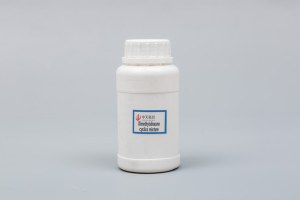Silane coupling agent, also known as silane treatment agent and primer, is a kind of low molecular organic silicon compound with special structure. The speciality of silane coupling agent lies in the two types of reactive groups with different chemical properties contained in it. One of the reactive group can react with organic materials, and the other is able to form chemical bonds with inorganic materials. Silane coupling agent is also the most widely used coupling agent today.
Zhongtian Silane Coupling Agents Product Series
Zhongtian, a silicone product supplier, has its own silane coupling agent product series. If you are looking for high-quality silane coupling agents, we can provide you, an attractive silane coupling agent price, with dimethylcyclosiloxane, hexamethylcyclotrisiloxane, and octamethylcyclotetrasiloxane.
Click to know silane coupling agent price.
Silane Coupling Agent Application
The silane coupling agent is good at improving the adhesion of organic and inorganic material interfaces and is widely used to enhance the strength and properties of glass fiber reinforced plastics. In recent years, silane coupling agent has been used in the production of inorganic-organic hybrids, such as laminates for printed circuit boards, artificial marble, plastic magnets, and silica immobilized bioactive substances. In addition to their use for improving interfacial adhesion, various applications for silane coupling agents are being developed. For example, they are now used to synthesize cross-linkable polymers using the reactivity of hydrolysis groups and to obtain antistatic and antimicrobial properties through surface treatment. In the near future, silane coupling agents will be employed in a wider range of fields.
Silane Coupling Agent Wiki
The silane coupling agent is prepared by the addition of chloroform and unsaturated olefins with reactive groups under the catalysis of platinum chloric acid, and then ysis. The silane coupling agent can be expressed by the general formula y (CH2) nSiX3, where n = 0 ~ 3; X = hydrolyzable group, y = organic functional group, which can react with resin. X usually includes Cl, ome, OET, oc2h4och3, osime3, and OAC. Because of this special structure, X molecules have reaction groups that can be chemically combined with inorganic materials (such as glass, silica sand, metal, etc.) and with organic materials (such as synthetic resin, etc.) at the same time, and can be used for surface treatment.
Therefore, through the use of silane coupling agent, a "molecular bridge" can be set up between the interface of inorganic and organic materials, and the two materials with different properties can be connected together. This is also why silane coupling agent is used to improve the properties of composite materials and enhance the adhesion strength.
Hazard Identification of Silane Liquid
Eye contact: Silanes can irritate the eyes. Silane decomposes to produce amorphous silica. Eye contact with amorphous silica particles can cause irritation.
Silane surface treatment
The silane surface treatment method is to link the inorganic and polymer interfaces by silane coupling agent to obtain the best wetting value and dispersibility. The silane surface treatment method requires a dilute solution of a silane coupling agent to facilitate sufficient contact with the treated surface. The solvent used is mostly water, , or water- mixture, and water without fluorine ions and cheap non-toxic ethanol, isopropanol is preferred. Except for ammoniacal silane, the solutions prepared by other silanes need to add acetic acid as a hydrolysis catalyst and adjust the pH to 3.5-5.5. Long-chain alkyl and phenyl silane are not suitable for aqueous solutions because of their poor stability. Chlorosilane and acetoxy silane will be accompanied by serious condensation reactions during hydrolysis, so they are not suitable for aqueous solution or hydroic solution. For silane coupling agents with poor water solubility, 0.1%-0.2% (mass fraction) of non-ionic surfactant can be added first, and then water can be added to make a water emulsion. In order to improve the economic efficiency of the hydrolytic stability of the product, the silane coupling agent can be mixed with a certain proportion of non-carbon-functional silane. When dealing with difficult-to-adhere materials, a mixed silane coupling agent or with the use of carbon-functional siloxane can be used. After preparing the treatment solution, it can be treated by dipping, spraying, or brushing. Generally speaking, block materials, granular materials, and glass fibers are mostly treated by the impregnation method; powder materials are mostly treated by spray method; the substrate surface that needs overall coating is treated by a brush coating method.
Buy from silicone products manufacturer.
Advantages of Silane Surface Treatment
Silane surface treatment has several advantages compared to traditional phosphating: no harmful heavy metal ions, no phosphorus, no need to add heat. The silane surface treatment process does not produce slag, short treatment time, easy to control. Fewer treatment steps, eliminating the need for surface conditioning, and reusable tank solution. Effectively improve the adhesion of paint to substrates. Co-line treatment of iron, galvanized, aluminum, and other substrates are possible.
Location : No.20 Huayin North Road, High-tech Industrial Park, Quzhou, Zhejiang,China, 324004 No.20 Huayin North Road, High-tech Industrial Park, Quzhou, Zhejiang,China,
Contact : Cheng Doris, 05708598517








